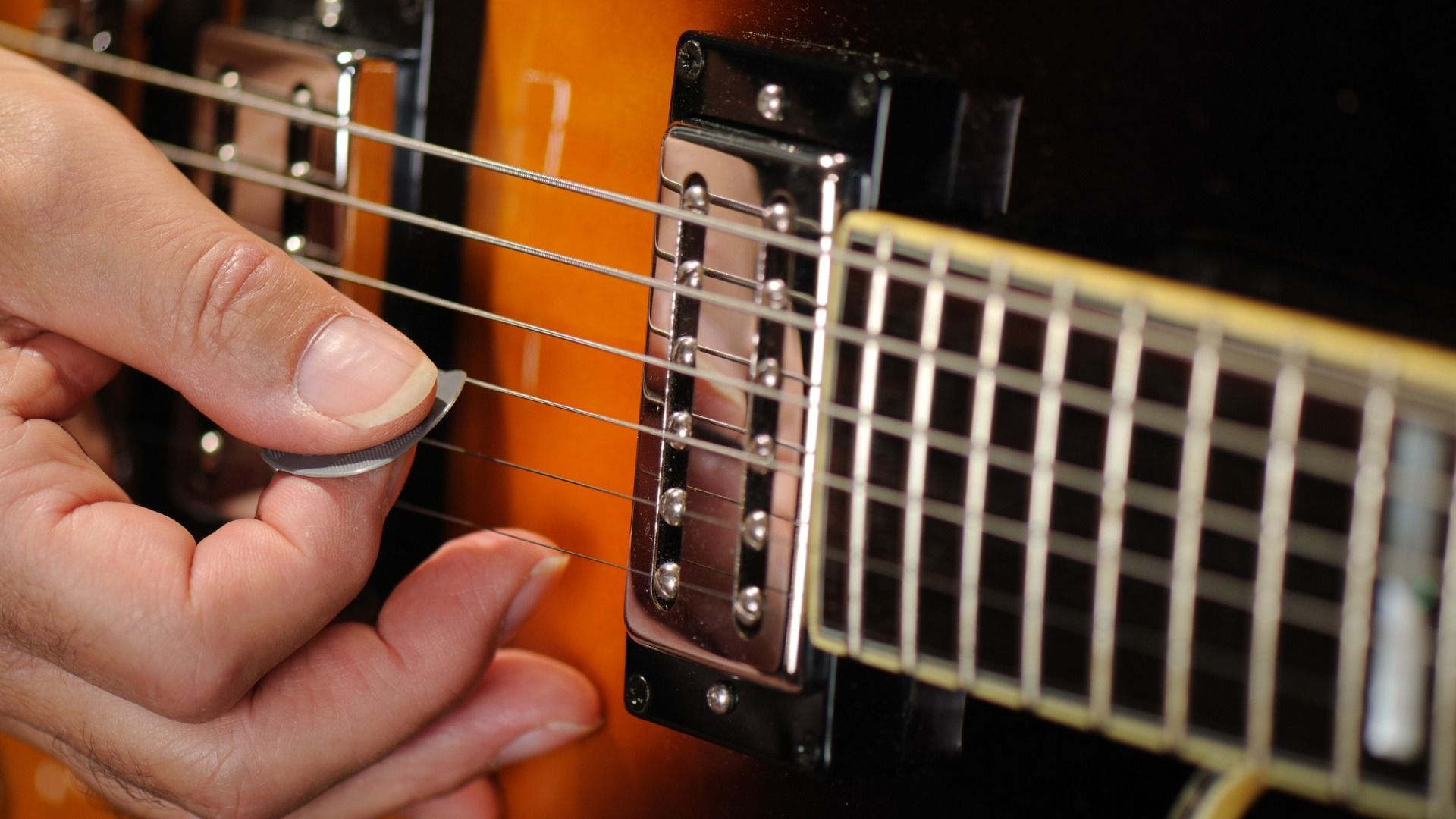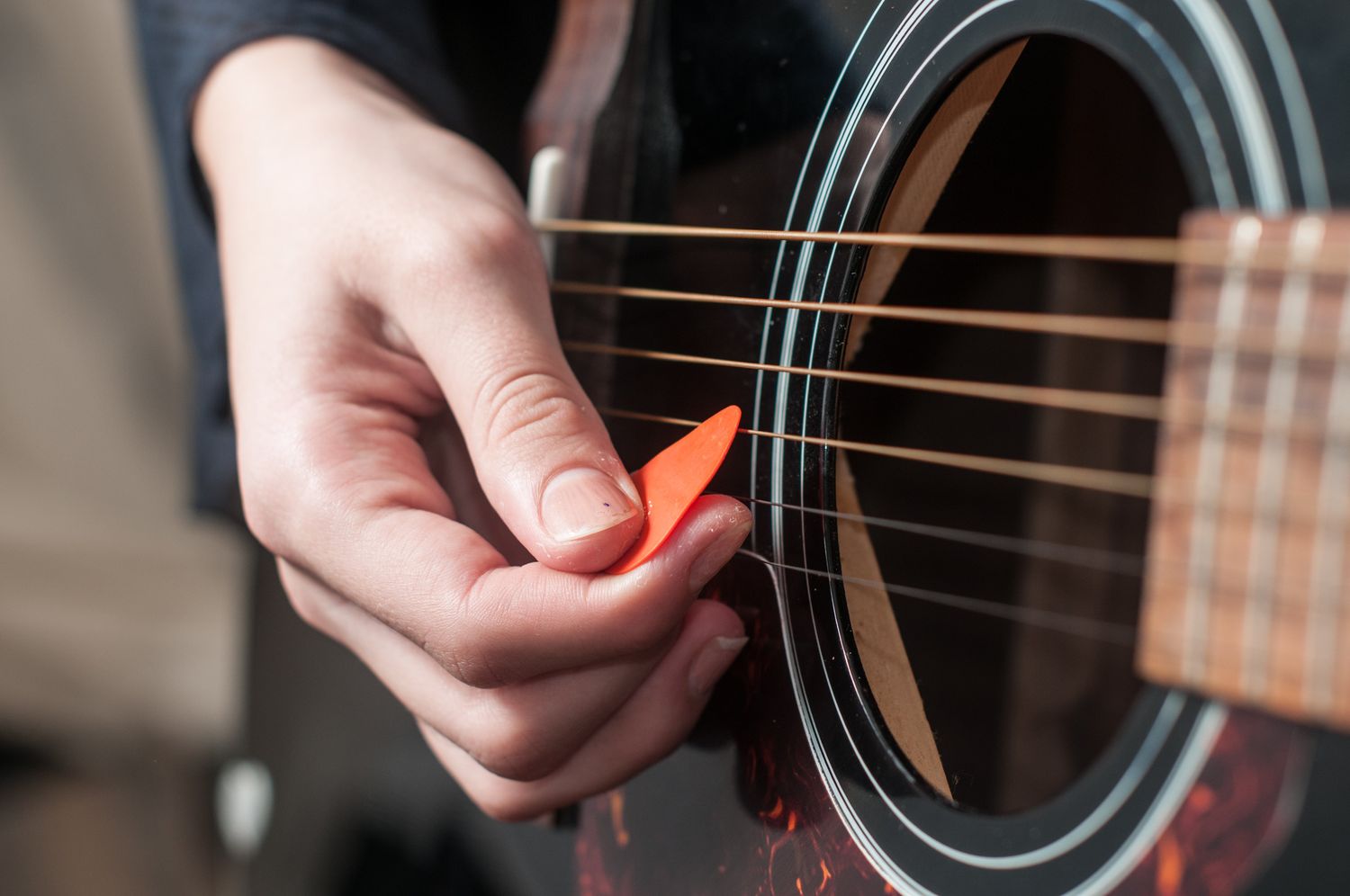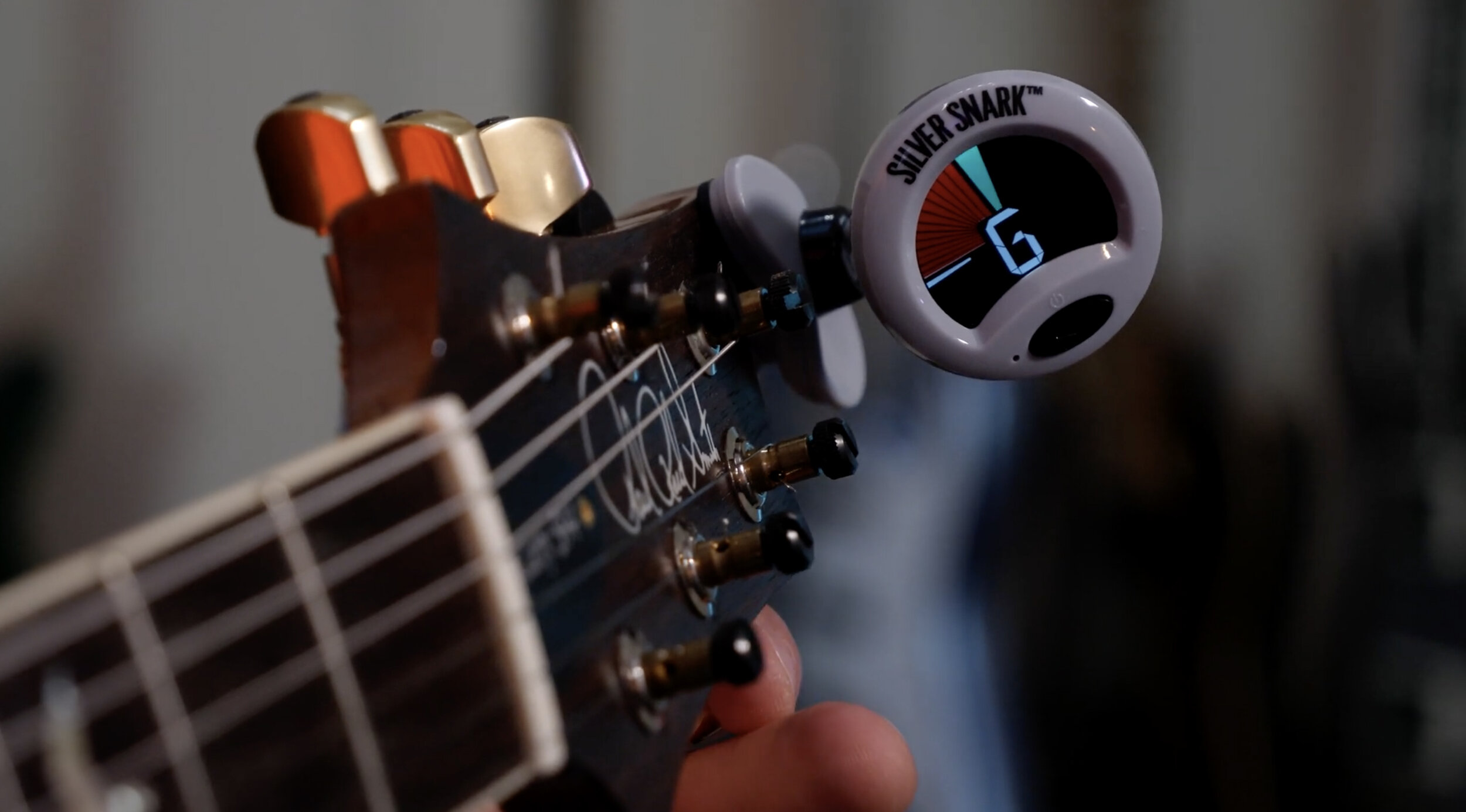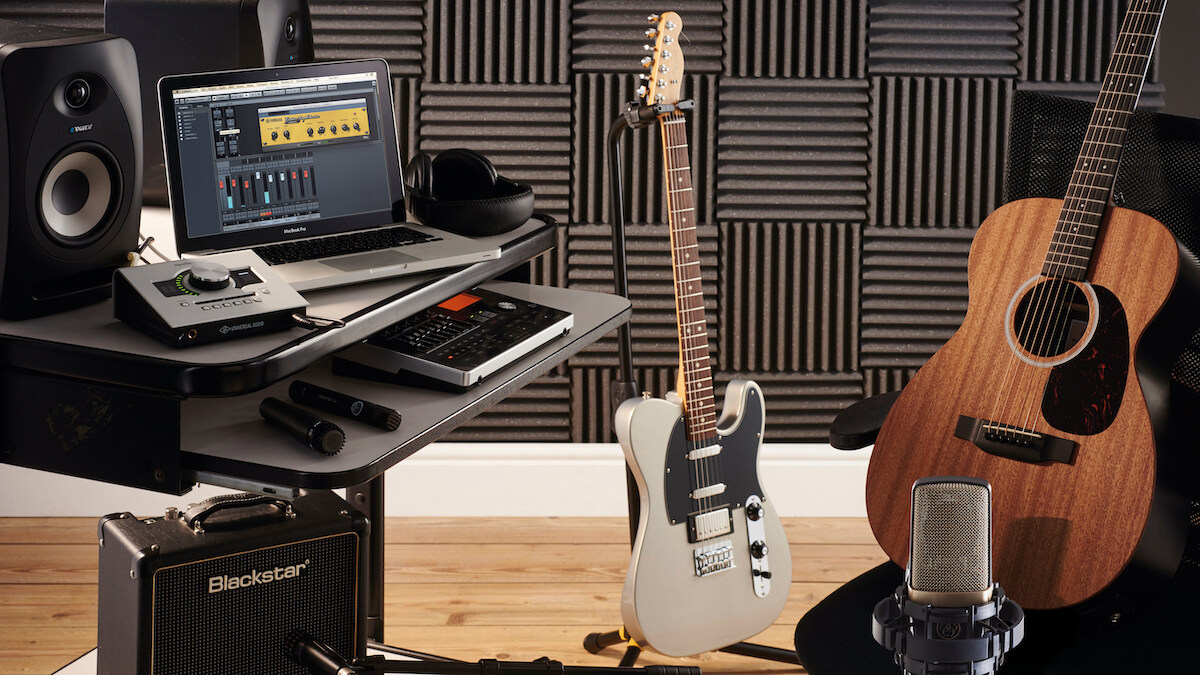Home>Instruments>Guitar>How To Use A Guitar Pick


Guitar
How To Use A Guitar Pick
Modified: February 15, 2024
Learn the proper technique for using a guitar pick to improve your playing. Discover tips and tricks for mastering the art of guitar picking.
(Many of the links in this article redirect to a specific reviewed product. Your purchase of these products through affiliate links helps to generate commission for AudioLover.com, at no extra cost. Learn more)
Table of Contents
Introduction
Playing the guitar is a timeless and cherished art form that has captivated music enthusiasts for generations. Whether you're a beginner or an experienced player, the guitar pick is an essential tool that significantly impacts your playing style and overall sound. In this guide, we'll explore the nuances of using a guitar pick, from understanding the different types available to mastering various strumming and picking techniques.
The guitar pick, also known as a plectrum, is a small, flat tool typically made of plastic, nylon, or other materials. It is held between the thumb and index finger and used to pluck or strum the strings of a guitar. While some guitarists prefer the natural feel of fingerpicking, using a pick offers distinct advantages, including increased precision, speed, and consistency in tone production.
Whether you're drawn to the raw energy of rock, the soulful melodies of blues, or the intricate fingerstyle of classical guitar, the pick plays a vital role in shaping your sonic identity. By understanding the nuances of pick selection, holding techniques, and playing styles, you can unlock a world of creative possibilities and elevate your musical journey.
Throughout this guide, we'll delve into the various types of guitar picks, offer insights into choosing the right pick for your playing style, and provide practical tips for holding the pick and mastering essential strumming and picking techniques. Whether you're strumming chords around a campfire or shredding through a blistering guitar solo on stage, the knowledge and skills you'll gain from this guide will empower you to harness the full potential of the guitar pick and enhance your musical expression.
Types of Guitar Picks
Guitar picks come in a variety of shapes, sizes, and materials, each contributing to a unique playing experience and tonal quality. Understanding the different types of guitar picks empowers players to tailor their sound and playing style to suit their preferences. Here are some common types of guitar picks:
- Standard Picks: These are the most commonly used picks and are characterized by their teardrop shape. They offer a versatile balance of flexibility and rigidity, making them suitable for various playing styles and musical genres.
- Heavy Picks: Constructed from thicker materials, heavy picks provide a more substantial feel and are favored by players seeking enhanced control and a robust attack on the strings, making them well-suited for aggressive strumming and lead guitar playing.
- Light Picks: Conversely, light picks are thinner and more flexible, offering a softer attack and producing a brighter, mellower tone. These picks are popular among acoustic guitarists and strummers aiming for a gentler sound.
- Finger Picks: Finger picks are unique in that they attach to the player’s fingertips, enabling a hybrid picking style that combines the precision of fingerpicking with the articulation of using a pick. They are commonly used in folk, bluegrass, and country music.
- Material-Specific Picks: Picks can be crafted from a wide array of materials, including plastic, nylon, celluloid, metal, and even wood. Each material imparts distinct tonal characteristics, with some offering a warmer, smoother sound while others provide a brighter, more aggressive attack.
Exploring the various types of guitar picks and experimenting with different options can lead to a profound understanding of how pick choice influences tone, playability, and overall musical expression. Whether you prefer the robust feel of a heavy pick for blistering solos or the delicate touch of a light pick for intricate fingerstyle arrangements, selecting the right pick is a deeply personal decision that can significantly impact your playing experience.
Choosing the Right Pick
When it comes to selecting the ideal guitar pick, there are several factors to consider, each of which can profoundly influence your playing experience and the resulting sound. Here are essential considerations to keep in mind when choosing the right pick:
- Playing Style: Your preferred playing style and musical genre play a pivotal role in pick selection. If you favor aggressive strumming and powerful lead playing, a heavier pick may provide the control and articulation you seek. Conversely, intricate fingerstyle playing or gentle acoustic strumming may call for a lighter, more flexible pick.
- Tonal Preferences: Different pick materials and thicknesses contribute to distinct tonal characteristics. Experimenting with various picks allows you to discern the tonal nuances they impart, helping you align your pick choice with your desired sound palette.
- Comfort and Grip: The physical comfort and grip offered by a pick are crucial aspects of playability. Some players may find that a larger, contoured pick shape enhances their grip and overall comfort during extended playing sessions.
- String Gauge and Instrument: The gauge of your guitar strings and the type of instrument you play can influence pick selection. Lighter picks may complement lighter gauge strings, while heavier picks can provide enhanced control and attack on thicker strings.
Ultimately, the process of choosing the right pick is highly personal and often involves a degree of experimentation. Many guitarists maintain a collection of picks, each offering unique tonal and tactile qualities, allowing them to adapt their pick choice to different musical contexts and playing techniques.
By exploring the diverse range of picks available and considering how they align with your playing style, tonal preferences, and physical comfort, you can curate a selection of picks that empowers you to express yourself authentically and dynamically through your instrument. The journey of finding the right pick is an enriching and ongoing exploration that enhances your connection with the guitar and enriches your musical voice.
Holding the Pick
The manner in which you hold a guitar pick greatly influences your playing technique and overall dexterity. While there is no singular correct way to hold a pick, certain methods can enhance your control, precision, and comfort during play. Here are some commonly used techniques for holding a guitar pick:
- Traditional Grip: This method involves holding the pick between the thumb and the side of the index finger. The pick extends slightly beyond the finger and allows for a balanced, versatile playing approach suitable for various styles.
- Extended Grip: With this approach, the pick extends further beyond the index finger, offering increased flexibility and a softer attack. It is favored by players seeking a more delicate touch and nuanced articulation.
- Three-Finger Grip: Some players opt to anchor the pick against the side of the middle finger in addition to the thumb and index finger. This technique can provide added stability and control, particularly during aggressive strumming or intricate picking patterns.
- Fingerstyle Hybrid Grip: For those incorporating fingerstyle and pick playing, a hybrid grip may be employed, allowing seamless transitions between pick and fingerpicking techniques. This method offers a versatile and expressive approach to playing.
Experimenting with various pick-holding techniques and observing how they influence your playing dynamics can lead to a more nuanced and adaptable approach to guitar performance. Additionally, finding a comfortable and natural grip that complements your hand anatomy and playing style is crucial for sustained enjoyment and progress.
It’s important to note that while these techniques provide a starting point, individual variations and personal adaptations are common among guitarists. The key is to find a grip that facilitates fluidity, control, and expressiveness, enabling you to unleash your musical creativity with confidence and ease.
Strumming Techniques
Mastering effective strumming techniques is essential for achieving rhythmic precision, dynamic expression, and tonal variation on the guitar. Whether you’re accompanying vocals, driving a rock anthem, or exploring folk and country styles, honing your strumming skills can greatly enhance your musicality. Here are some fundamental strumming techniques to explore:
- Downstrokes: The foundational technique of downstrokes involves strumming the strings in a downward motion, typically with the pick striking the strings in a fluid, continuous motion. This technique is integral to establishing the rhythmic foundation of a song and is commonly used in various musical genres.
- Upstrokes: Upstrokes involve strumming the strings in an upward motion, offering a contrasting dynamic to downstrokes. By incorporating upstrokes into your strumming patterns, you can introduce rhythmic variation and accentuate specific beats within a musical phrase.
- Strumming Patterns: Experimenting with diverse strumming patterns, such as the popular “down, down-up, up-down-up,” can add depth and texture to your playing. These patterns create rhythmic interest and can be tailored to complement the mood and energy of a song.
- Palm Muting: Palm muting involves lightly resting the side of your picking hand’s palm on the strings near the bridge, resulting in a subdued, percussive effect. This technique is commonly used to add a rhythmic drive and create a distinctive tonal texture.
Developing proficiency in these strumming techniques empowers you to infuse your playing with rhythmic vitality, expressive dynamics, and stylistic versatility. By integrating various strumming patterns and mastering the interplay of downstrokes and upstrokes, you can elevate your guitar performance and engage listeners with compelling rhythmic narratives.
Furthermore, exploring the nuanced art of palm muting adds a layer of rhythmic sophistication to your playing, allowing you to craft evocative textures and drive the rhythmic pulse of a song with finesse. As you refine your strumming techniques, you’ll discover the boundless potential for creative expression and rhythmic innovation within your musical repertoire.
Picking Techniques
Refining your picking techniques is crucial for achieving precision, speed, and articulation on the guitar. Whether you’re delving into intricate lead lines, crafting melodic arpeggios, or navigating complex chord progressions, mastering diverse picking techniques enhances your expressive range and musical fluency. Here are essential picking techniques to explore:
- Alternate Picking: Alternate picking involves consistently alternating between downward and upward pick strokes, fostering fluidity and efficiency in playing. This technique is fundamental for executing rapid passages and maintaining rhythmic clarity.
- Economy Picking: Economy picking incorporates a fluid, economical motion that minimizes unnecessary pick movement, enabling seamless transitions between strings and facilitating rapid, intricate lines. It optimizes efficiency and conserves energy during complex passages.
- Sweep Picking: Sweep picking entails executing a series of consecutive down or upstrokes across adjacent strings, producing a smooth, cascading effect. This technique is commonly employed for executing arpeggios and fluid, rapid note sequences.
- Hybrid Picking: Hybrid picking combines the use of a pick and individual fingers, offering a versatile approach that enables simultaneous string plucking and pick articulation. This technique is favored for intricate fingerstyle passages and dynamic tonal variation.
By honing these picking techniques, you can expand your musical vocabulary, navigate complex musical arrangements with confidence, and imbue your playing with a heightened sense of clarity and expressiveness. The mastery of alternate picking fosters rhythmic precision and technical agility, empowering you to navigate intricate passages with finesse and control.
Additionally, incorporating economy picking into your arsenal enhances your fluidity and dexterity, enabling seamless execution of rapid, intricate phrases and arpeggios. Sweep picking, with its cascading, fluid motion, unlocks the potential for crafting mesmerizing arpeggiated passages and dynamic melodic contours.
Furthermore, the integration of hybrid picking techniques offers a multifaceted approach to string articulation, allowing for seamless transitions between pick and fingerstyle playing. This versatility enriches your musical palette, enabling you to explore a diverse range of tonal textures and melodic expressions with ease.
As you delve into the realm of picking techniques, you’ll uncover a world of expressive possibilities, technical refinement, and creative exploration, enriching your musical journey and empowering you to articulate your musical vision with precision and passion.
Conclusion
Mastering the art of using a guitar pick is a transformative journey that encompasses a rich tapestry of techniques, tonal nuances, and expressive possibilities. From understanding the diverse array of pick types to honing essential strumming and picking techniques, the guitar pick serves as a gateway to unlocking your musical potential and shaping your sonic identity.
Exploring the myriad types of guitar picks, ranging from standard teardrop shapes to specialized finger picks, illuminates the profound impact that pick selection has on tone, playability, and artistic expression. The process of choosing the right pick is a deeply personal endeavor, guided by considerations of playing style, tonal preferences, and physical comfort.
Furthermore, mastering the art of holding a pick and refining your strumming and picking techniques empowers you to navigate a diverse musical landscape with finesse, rhythmic vitality, and technical prowess. Whether you’re delving into the rhythmic intricacies of strumming patterns or unraveling the melodic tapestries of arpeggios, the guitar pick serves as a conduit for your creative vision and musical narrative.
As you embark on your journey with the guitar pick, remember that experimentation, perseverance, and a spirit of curiosity are your allies. Embrace the process of discovery, celebrate the nuances of tone and technique, and revel in the joy of musical expression. Whether you’re crafting soul-stirring ballads, unleashing blistering solos, or weaving intricate fingerstyle arrangements, the guitar pick stands as a steadfast companion, amplifying your voice and resonating with the essence of your musical journey.
Ultimately, the guitar pick transcends its physical form, evolving into an extension of your musical identity and an instrument of boundless creativity. Embrace its potential, cherish its subtleties, and wield its power with reverence and joy, for the journey of using a guitar pick is a symphony of self-discovery and artistic fulfillment.











